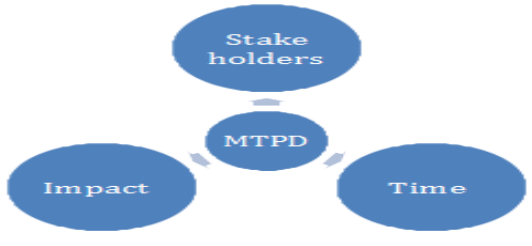Business Impact Analysis is a management level analysis, which throws light on critical business processes and identifies which business units, operations and processes are vital for the organization’s existence. It also aims at identifying critical risks and sudden losses. The BIA is the initial step in business continuity and recovery planning. It involves accessing both financial and non-financial (customer service, market support, supplier confidence) cost functions of the organization, during business disruption and business restoration periods.
The BIA assumes that every function in the organization is dependent upon the continued functioning of every other function. Whereas, some are more crucial than others and require a great allocation of funds in case of arise in a disaster. The BIA report measures all the functions and allocates appropriate fund to protect them. Impact is expressed monetarily, for the purpose of comparison
Steps applied in BIA

A BIA looks at each product, service, process and activity within the organization, understands its significance to the organization and determines the impact over time that would result if it were to be disrupted. In such cases, potential losses would be analyzed, studying the interdependencies of the activities within the business. Best approach would be selected in order to recover from the incident keeping in mind the time factor. Results would then be recorded and documented for future reference.
The BIA will enable the organization to select an appropriate approach to and detailed strategy for business recovery after a disruption. Once the approach is selected, the BIA can even assist the organization in working out how long an incident can be left until the plan is invoked. This decision of when to act is particularly difficult in situations where the problem is temporary. It can be uses to consider the impact of disruption under other assumptions, such as relocation or reorganization, to identify and provide required resilience.
Time and Impact
The point in time when a business function or process is disrupted can have a significant bearing on the loss sustained. Time is everything in managing unexpected incidents. The cause of the incident and its immediate impacts will determine the time taken for initial response. The impacts and timescales of a disruption need to be planned, to determine the likely priorities after the incident. There are three interacting elements that determine the survival of an incident and are collectively called as the maximum tolerable period (MTPD) of disruption:

Let’s take for instance, a store damaged in the weeks prior to the holiday shopping season. Holiday shopping season attracts wide range of customers (stakeholders) and it is that time of the year where store makes maximum sales. When store has got initial indications on damage occurrence, should start making contingency plan to run the sales during holiday season. Either finding another location to stock up with good communication in the market or put up a stall infront of the store, stating the incident that occurred. Impact would not be dreadful if reaction to the incident is quick and prompt. This could sometimes gain customer’s sympathy, but it will not last long. However, if incident is not handled well customers may lose patience and lead to substantial amount of sale loses for the year.
Therefore, we conclude by saying analyzing the business impact is most crucial keeping in mind the time, in case of occurrence of any threat or unexpected incident. Some of the process tools used for BIA includes questionnaires, interviews or worksheet. Some businesses also include threat and risk analysis as a part of BIA.
